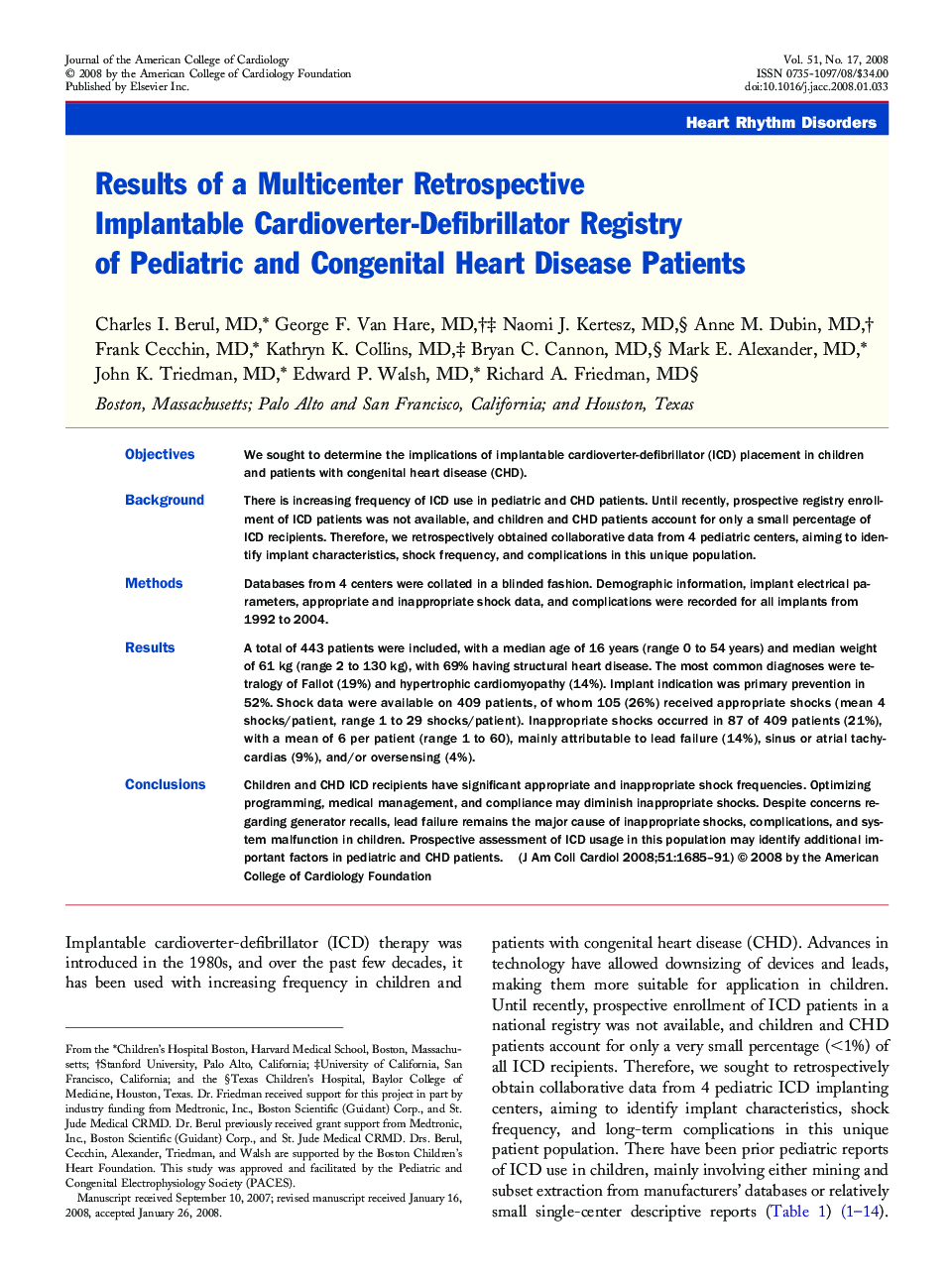| Article ID | Journal | Published Year | Pages | File Type |
|---|---|---|---|---|
| 2950250 | Journal of the American College of Cardiology | 2008 | 7 Pages |
ObjectivesWe sought to determine the implications of implantable cardioverter-defibrillator (ICD) placement in children and patients with congenital heart disease (CHD).BackgroundThere is increasing frequency of ICD use in pediatric and CHD patients. Until recently, prospective registry enrollment of ICD patients was not available, and children and CHD patients account for only a small percentage of ICD recipients. Therefore, we retrospectively obtained collaborative data from 4 pediatric centers, aiming to identify implant characteristics, shock frequency, and complications in this unique population.MethodsDatabases from 4 centers were collated in a blinded fashion. Demographic information, implant electrical parameters, appropriate and inappropriate shock data, and complications were recorded for all implants from 1992 to 2004.ResultsA total of 443 patients were included, with a median age of 16 years (range 0 to 54 years) and median weight of 61 kg (range 2 to 130 kg), with 69% having structural heart disease. The most common diagnoses were tetralogy of Fallot (19%) and hypertrophic cardiomyopathy (14%). Implant indication was primary prevention in 52%. Shock data were available on 409 patients, of whom 105 (26%) received appropriate shocks (mean 4 shocks/patient, range 1 to 29 shocks/patient). Inappropriate shocks occurred in 87 of 409 patients (21%), with a mean of 6 per patient (range 1 to 60), mainly attributable to lead failure (14%), sinus or atrial tachycardias (9%), and/or oversensing (4%).ConclusionsChildren and CHD ICD recipients have significant appropriate and inappropriate shock frequencies. Optimizing programming, medical management, and compliance may diminish inappropriate shocks. Despite concerns regarding generator recalls, lead failure remains the major cause of inappropriate shocks, complications, and system malfunction in children. Prospective assessment of ICD usage in this population may identify additional important factors in pediatric and CHD patients.
